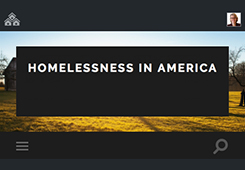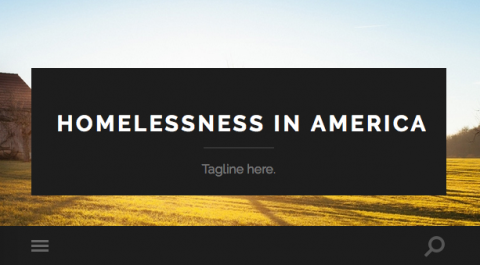
Structuring Student Reflections with Mini WordPress Websites

Laurie Goldman, Lecturer in Urban and Social Policy, recently introduced WordPress blogs into her “Homelessness in America” course. Here, she talks about what worked and what didn’t.
You recently engaged your students in the development of mini-websites in addition to the other assignments for your course. Why did you want to try this new approach?
We introduced the blogs to structure students’ personal reflections on various elements of the course. They were encouraged to post their reflections on specific class activities (such as our visit to a homeless shelter and guest lectures), on their volunteer service or observations of public hearings, and their interactions with people selling Spare Change newspaper and other encounters with people experiencing homelessness. These reflections were intended to supplement and complement weekly contributions to the Trunk Discussion Forum that is devoted to discussions of the class readings.
The blogs were also intended to serve as a vehicle for communicating about these reflections with fellow classmates and with the instructors outside of the class sessions. The hope was that the act of reflection, feedback from me, and comments from fellow classmates would stimulate ideas for further exploration in final papers.
In addition, the mini-websites were intended to serve as a coordination infrastructure for the multiple projects and course activities. The students posted their “Individual Learning Aspirations Goals” set at the beginning of the semester. We hoped that having the goals, reflections, and comments in the same place would facilitate intentional pursuit of these goals.
Students received prompts to post at particular times during the semester. They were encouraged to post five times over the course of the semester as one component of the class participation grade.

In what ways did you feel that the activity met these goals? What worked well, and what would you do differently?
Many of the students enjoyed the opportunity to articulate these reflections in writing (and sometimes with photos and web-links) in a more personal and less formal way than was afforded in the other course modalities such as in-class discussion, the Trunk Discussion Forum, and formal written assignments. I appreciated the opportunity to hear about these reflections and communicate one-on-one with students about them.
However, the blogs proved less effective as a vehicle for offering feedback and stimulating peer interactions than we hoped.
- No students commented on one another’s posts. It was thus not an effective means to promote interaction among students or to invite one another to participate in course-related social service or other activities.
- By the time I read the more spontaneous posts (those not a response to a specific prompt), it was often too late to bring the content into class discussion.
- Few students responded directly to my comments on their posts. (However, the comments did prompt one-on-one meetings with me.)
How did you assess the impact of the activity?
- I followed the number of posts and read the content.
- In one of the last sessions of the course, I asked the students for feedback on the posts in class. (I also checked in a couple of times during the semester.) Although everyone agreed that it would have been much more effective if we had a mechanism to alert the class about new posts, about two-thirds of the students emphasized that they valued the opportunity for that type of reflection. They recommended that it continue to be part of the course, especially if there were a mechanism to announce new posts.
What are some of the lessons learned that you might share with others?
This tool is more useful when there are fewer additional mechanisms for sharing reflections. Our students made use of the Trunk Discussion Forum for reflections on class readings (including the requirement that they comment on at least one other student’s post for each week) and Google Docs for working collaboratively on several group projects.
As noted above, the tool would be more effective if there were a way to alert the participants – the students and the instructors – to new posts. It would also be valuable to create a hashtag-type alert for particular themes.
What do you hope to do next?
I hope to modify this approach in the future, especially if there is a feed to announce the new posts. If a feed of type noted above is not feasible, I may assign small groups of students to read one another’s blog posts on a regular basis.
Since an individual blog is not optimal for collective reflection, I may experiment with group rather than individual blogs.



